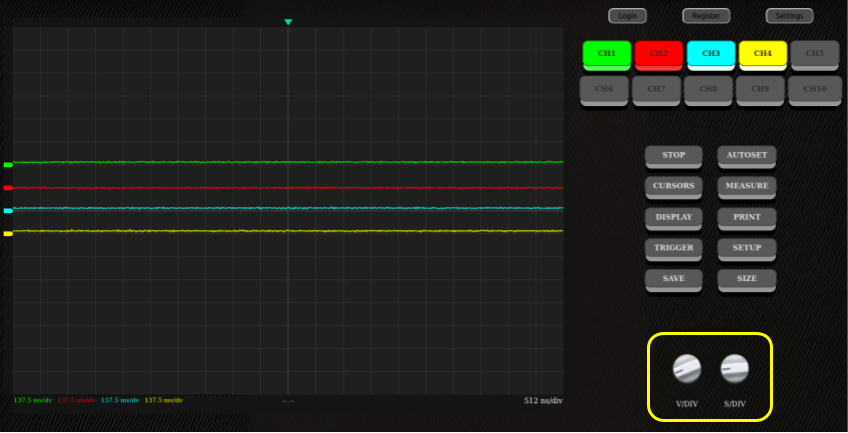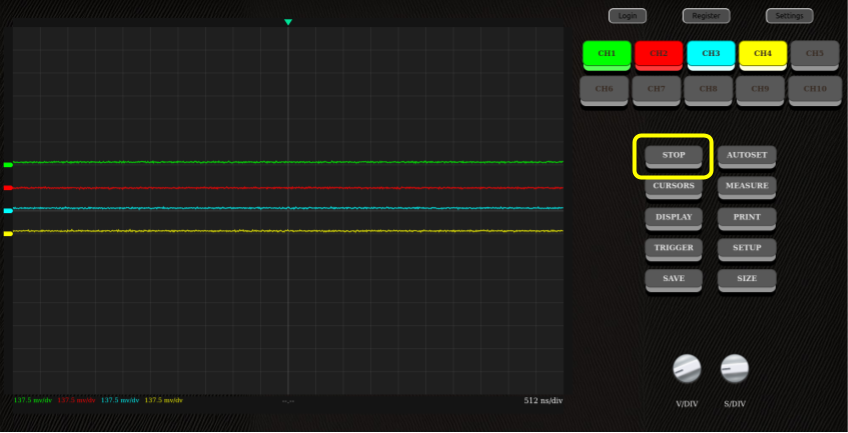Channel-buttons
Each channel displayed on screen has a button assigned to allow the user to mask and/or focus each signal.

Clicking on a channel button will focus this channel, this means we can then change its vertical scale, measure its tension using cursors, etc.
If the user clicks on a button that is already focused, it will hide the signal and the button will turn gray.
If a channel is not displayed but available and the user clicks on its button, the channel will now be displayed.
As you can see in the video above, clicking on a channel already displayed will focus it.
The focused channel has a thick white border to keep track of it.
Horizontal-offset
You can move the signals horizontally at any moment by using the horizontal-offset cursor.
Simply click and drag the cursor to the left or right to move the signals.
Knobs
Now let's see how to use the two knobs present at the bottom right of the page.
The left knob is used to change the vertical scale of a specific channel and the right knob is used to change the horizontal scale of all channels.

To change the horizontal scale of the signals, simply turn the right knob left or right and you will see the signals on the screen expand or shrink.
The procedure requires an extra-step for the vertical-offset, since this is specific to a single channel, you first need to focus a channel (Using the channel buttons) and then change its scale using the left knob.
Readings

At the bottom of the screen are readings.
By default, there are only two types of readings, the V/div of each channel and the global S/div.
These readings are updated in real-time as you change the scales of the signals.
Start-Stop
To start the oscilloscope up, simply click on the 'RUN' button.
To stop it, click that same button which should now say 'STOP'.

Vertical-offset
The vertical offset is specific to each channel. It allows the user to move a signal up or down.
To do so, simply use the cursor on the left of the screen associated with the signal you want to move (it should be the same color).
A hidden signal will not have a cursor available, you need to display the signal first.